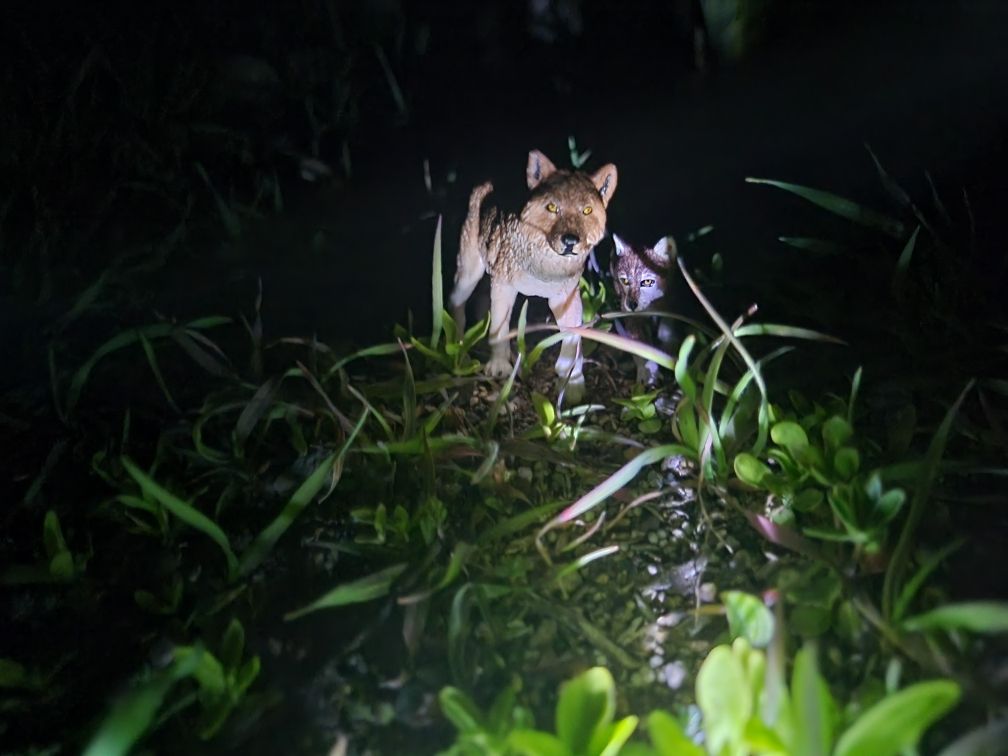
Happy spooky season to everyone! I hope this article finds you in good spirits to enjoy a spooky old bed time story. The topic is on the Papo wolf pair (Canis lupus) introduced in 2022, #50283 and #50284 respectively, but our story begins in Europe… La Beté du Gèvaudan is a longstanding horror story from Southern France. Unfortunately, this story is more questionable than factual, but here is a simplified retelling of it.

A large feral beast stalked the land of Gèvaudan (roughly an area of some 50×56 miles or 80×90 kilometers) from 1764-1767. It may have attacked anywhere from 100-600 people during its reign of terror. No one can say for certain what it was, but the generally accepted theory is that some sort of wild wolf was responsible. It preyed largely on women and children during this time, but it did attack grown men also. The killings were gruesome; some were nearly consumed entirely with little more than a smear left on the ground; others were left largely intact but mangled from the ordeal. The beast apparently had a preferred killing method of decapitation, and on some occassions appeared to kill for sport rather than hunger. There are too many accounts of encounters to relay here, however the two of notoreity that I will mention are that of a young woman traveling at night and one of several young children keeping watch on their sheep.
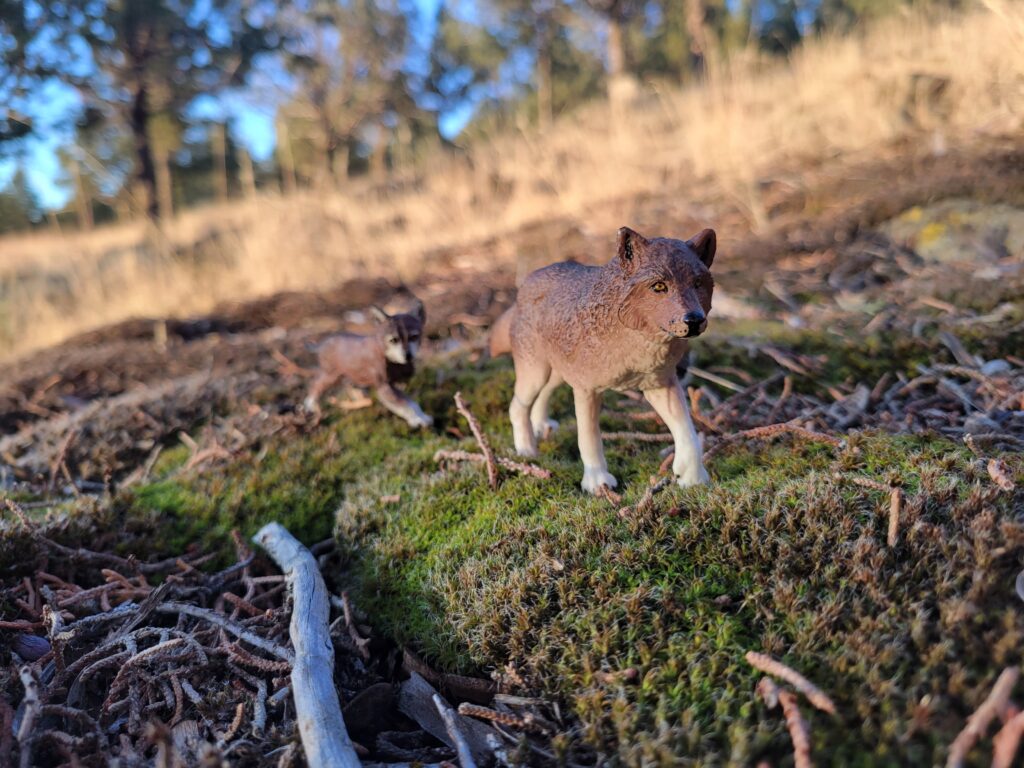
Marie-Jeanne Valet was walking from her home, through the woods, to a nearby farm in the evening. It began to get dark and upon glancing behind she saw the large black-red beast stalking her. Luckily she had the wisdom to carry a homemade spear with her which she was able to fend off her attacker and run to safety. Her bravery has been immortalized with its own statue in her honor; a young girl holding her only defense against a raging beast leaping for her throat. Her description was of an animal that was most like an “overlarge” dog. Most accounts describe it as reddish-black, with a dark stripe down its back, and a long thin tail… These features and others recounted by other victims have become that which are easily recognized as hysterical imagination, but I digress.

The second account is that of Jacqués Portefaix. While out with other children of varying ages watching their sheep the beast appeared and tried to take one of the children. In his bravery, Jacques would not allow this and was able to convince the other children to fight back. They were able to rescue the victim and fight off the attacker with their own homemade spears of knives tied to sticks. In this instance, the children were even rewarded for their bravery by King Louis XV, raising many of them out of poverty and elevating them into society proper.
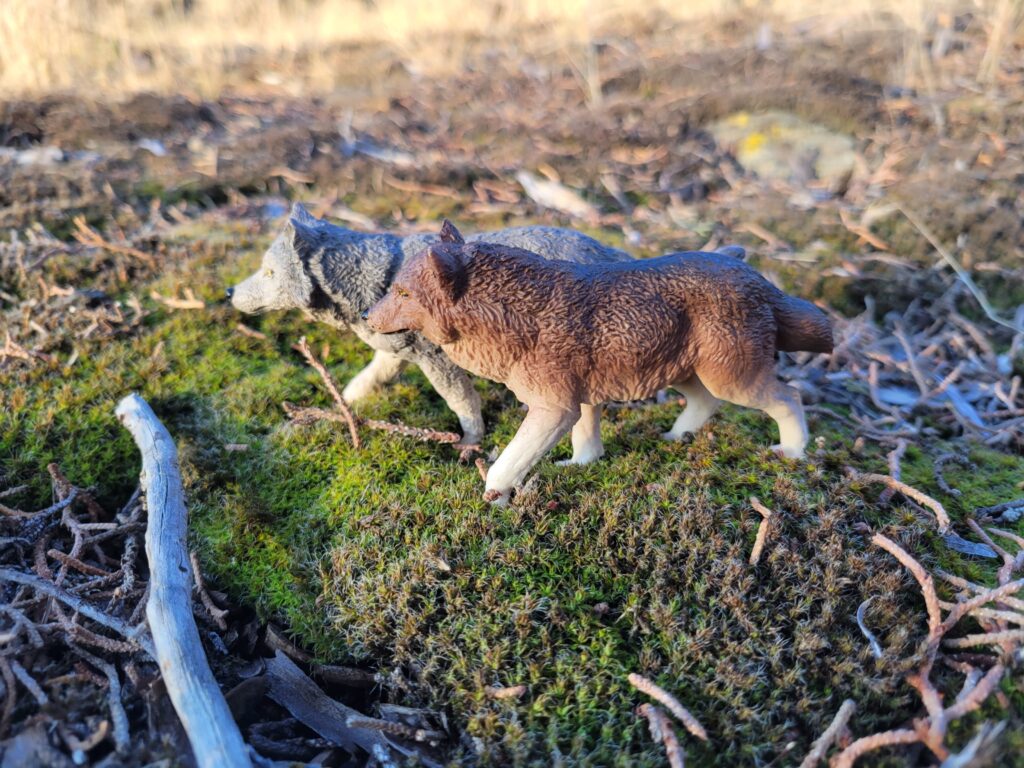
Once it became a concern of the nation, let alone the talk of the entire continent, King Louis hired and sent numerous “expert hunters” and experienced men of military background. A handful of extremely large European wolves were killed, but the attacks continued. Each hired marksmen ultimately failed in their task. Credit for finally ending the Beast’s reign of terror is given to a local; Jean Chastel who put to an end to an animal that ultimately ceased all further attacks. This exceptionally large animal was attempted to be stuffed, paraded through high society and lining the pockets of some who had a hand in the hunt; however it is generally accepted that the taxidermy was done very poorly and the body eventually disposed of. There was only one “scientific grade” inspection of it before it simply vanishes from written record and likely was buried somewhere to avoid the stench of decomposition.
In any case, the attacks in this region of France became some of the earliest international news shared. Even to this day it garners much speculation… to some it was a complex cover up for a local serial killer, to others it was an escaped menagerie animal like a lion or a hyena; others still claim it to be a wolf, wolf-dog hybrid, pack(s) of wolves, or perhaps even a red mastiff owned by Jean Chastel himself. Theories fly due to the uncertain nature of details for this story. Quite simply, there just isn’t enough “cold hard facts” to lay to most of these speculations to rest. We do know that SOMETHING was stalking the land and its people with intent to harm.
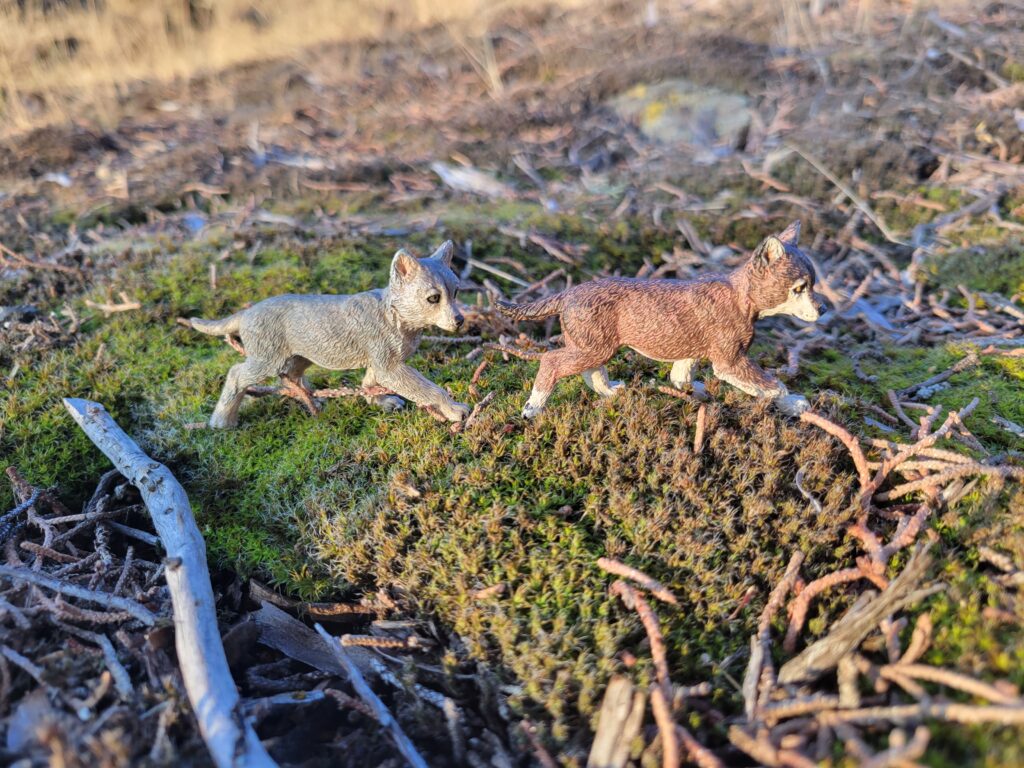
Ultimately, what seems to prove the identity of the beast that was killed at last is contained in the “Marin Report”. The royal notary Roch Étienne Marin did an early aproximation of an autopsy report. In short, this document notes the animal’s unique proportions and physical description right down to scars on its body. It includes reports of victims who claimed to recognize it. But most importantly it lists the dental formula; 6 incisors, 2 canines, 12 molars for the upper jaw and 6 incisors, 2 canines, and 14 molars for the lower. This formula is indicative that the identity was that of a canid. Likely a wolf, dog, or hybrid, indeed was the identity of this killer that instilled fear in the countryside for some 3 years.
Putting this mythology aside, we can now get down to the proper substance for this article. Eurasian wolves have had a similar history fraught with danger. While many ancient peoples (Celtic, Slavic, Greek, Roman, etc.) incorporated them into their culture and held them in high regards for worship, by the medieval period they were largely viewed as vermin at best or villains at worst. They have had heavy extermination efforts since, which has culminated in the extinction and fragmentation of populations that today are recognized as unique. However, while conservation has had a rocky start in some European locales, it is beginning to take hold in some regions. These important animals are making their comeback.
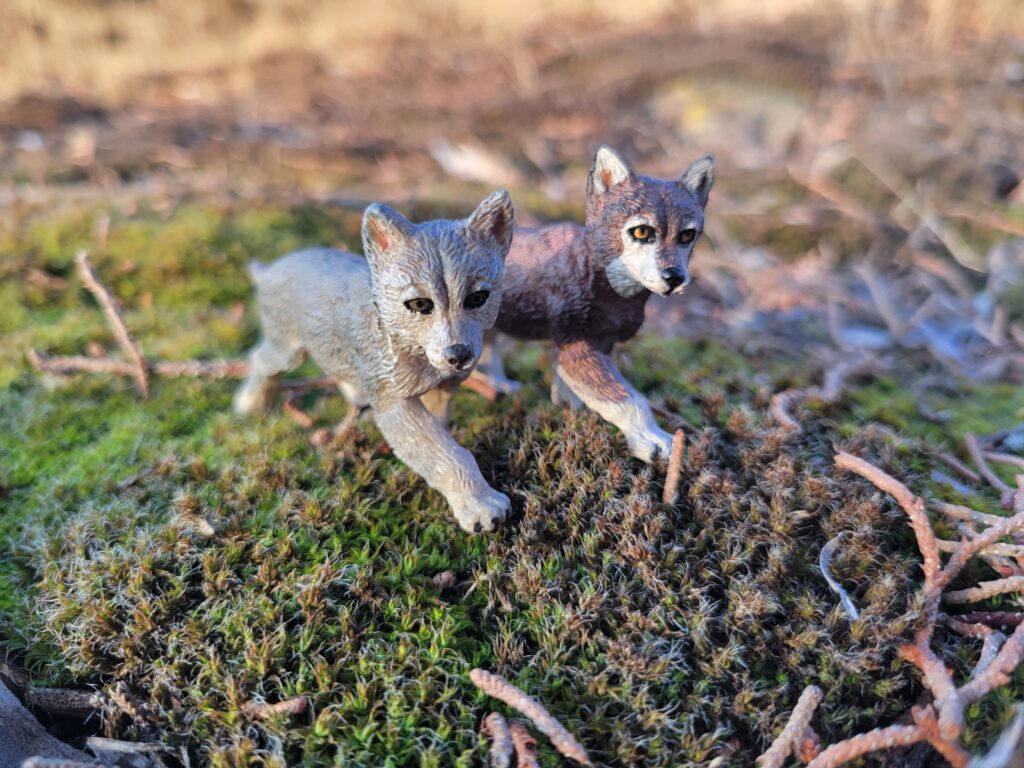
In general, they are a large wolf type that can reach up to 69-79 kg (152-174 lbs). Average size is around 39 kg or 86 lbs though. They range in every color although it is generally considered that the melanistic (black), albinistic (white), and erythristic (red) coat traits are due to hybridization with domestic dogs. Interestingly, both Eurasian wolf howls and North American wolf howls appear to be mutually intelligible, with both species responding to vocalizations made by animals half a world away.

The models to discuss for this blog are the Papo wolf #50283 for the adult and #50284 for the pup. The pup is a reused mould from #50162 simply repainted while the adult is a unique sculpting. The adult has a heavy winter coat with very apparent erythric traits and only mild amounts of grizzling (darker patches to diffuse the undercoat color) and countershading is limited to her legs. She has a faint dark stripe running dorsally down from her shoulders to her tail tip, a thick mane of fur about her neck, yellow eyes, and a peaceful expression. Overall the sculpt is really well done for an animal in the thick of winter sporting features that can be missed in other models. The pup on the other hand, while it is the same sculpt as the superb original gray wolf pup, suffers a little more. For me, it boils down to the paint work. The shading is less well done and has harsher borders rather than blending from pale to red. This pup has a mask which isn’t technically incorrect, but because of the harshness of the contrast between the white and the red it comes off as sloppy to me. The legs and underbelly suffer from the same issue and this makes the figure appear almost more dog-like with the type of patterning present. The only coloration that I really do like is that it also has a faint dark dorsal stripe from its shoulders to its tail tip. The sculpt is the same well done original, this just goes to show that a new coat of paint doesn’t always reinvigorate. Both figures are well done in different respects, perhaps it only boils down to taste.
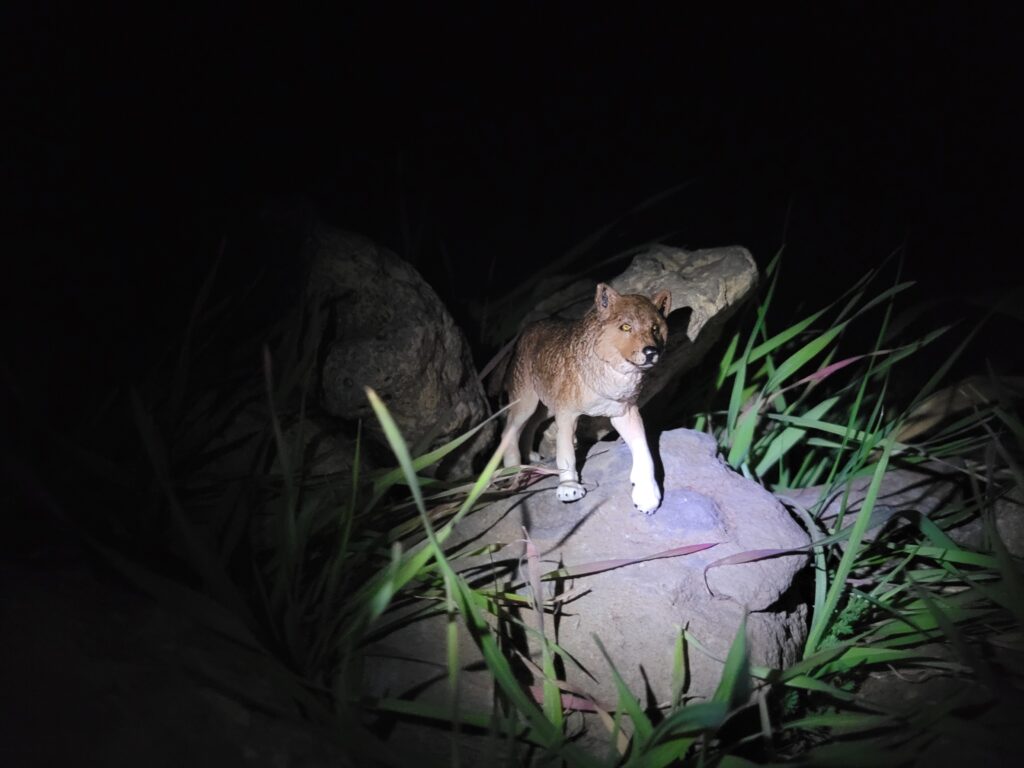
This pair resembles the animal in the stories of the la Bete du Gévaudan and even seems to match with some of the theories. Whether or not it was an individual or entire pack who learned to prey on man or was a regional issue of the entire population being driven to this predation, will likely never be known. And of course, it cannot be ruled out that a hybrid was responsible for the attacks; the phenomenon of hybrid vigor can lead to animals much larger than either parent as well as the very dangerous traits of both being terrifyingly feral of man but also just curious or just unafraid enough of man to view him as a potential meal. The only thing that can be counted on is that the dental formula doesn’t lie; the culprit was likely canine. These sorts of stories are sadly not unique either. While Gévaudan had become famous for this time of peril, these sorts of events are the reason why wild Eurasian wolves were feared and hunted. My hope is that now, with modern tolerance and understanding, these important, unique, and beautiful animals can be returned to the landscape so that we can live side by side. I hope you have enjoyed this retelling of la Beté du Gévaudan and the analysis of these figures. Have a happy Halloween!
Disclaimer: links to Ebay and Amazon on the AnimalToyBlog are affiliate links, so we make a small commission if you use them. Thanks for supporting us!




It’s spelled “la bête du Gévaudan”.
Nice review and story!